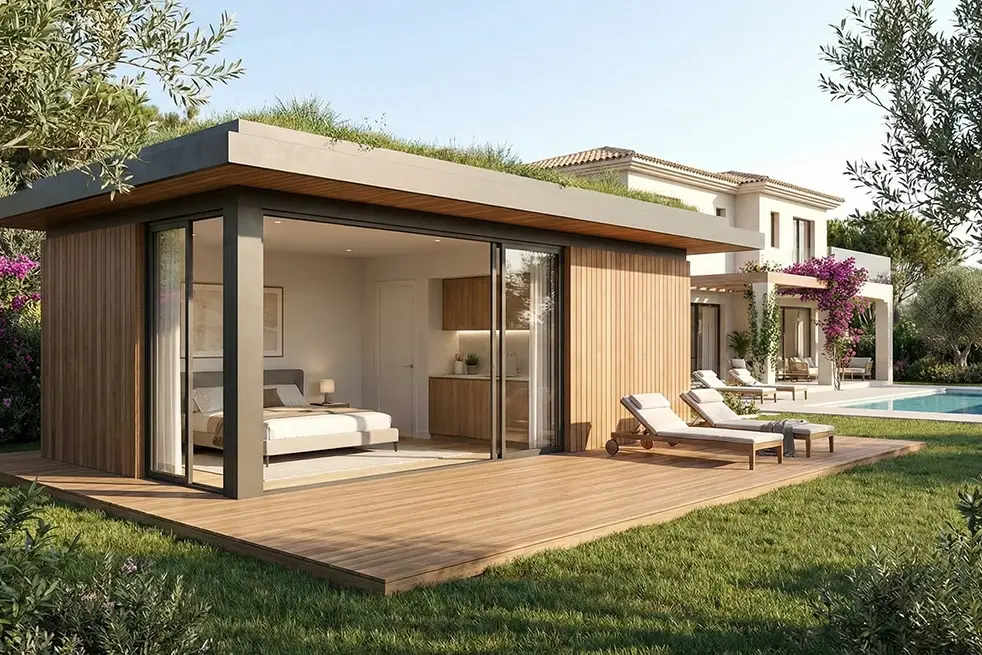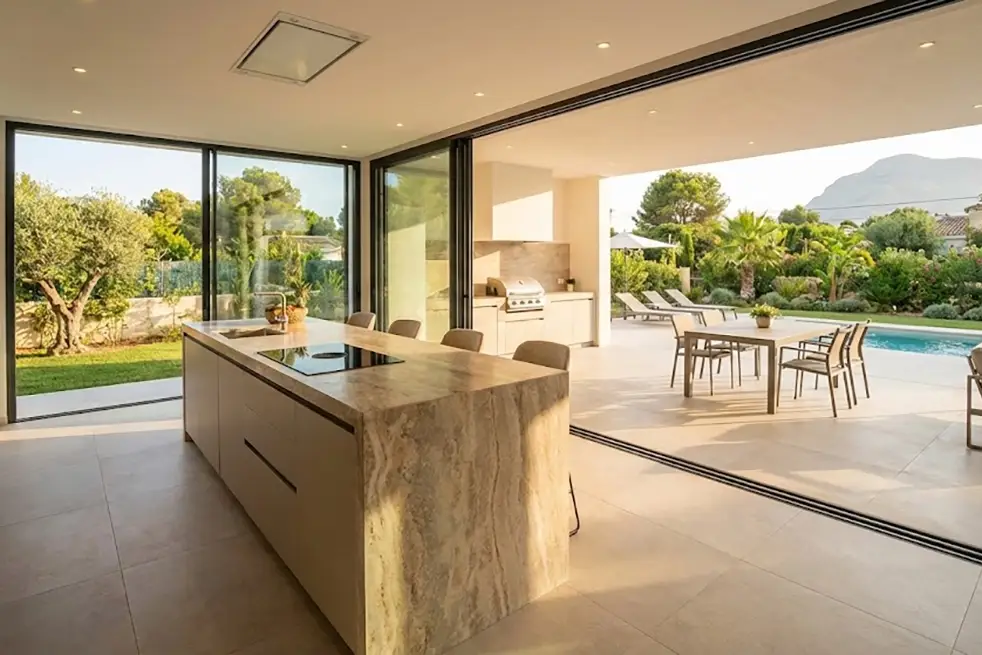Swimming pools in mediterranean homes are much more than a leisure feature. They represent a lifestyle shaped by sunny weather, outdoor living and a deep connection with the landscape. However, designing a pool goes beyond choosing an attractive shape: it also involves planning regulations, safety standards and proper integration into the environment.
In this article we explore how swimming pools are regulated in the Comunidad Valenciana, what design aspects should be considered, and how to ensure they become a true added value within mediterranean architecture.
Basic regulations for building swimming pools in mediterranean homes
Before planning a pool, it is essential to know the legal requirements that apply in the Comunidad Valenciana:
-
Building permit: constructing a swimming pool requires a municipal permit, as it is considered major works.
-
Minimum distances: pools must respect setbacks from boundaries, paths and buildings, which vary depending on each municipality’s planning rules.
-
Plot coverage: some local ordinances limit the percentage of the plot that can be occupied by the pool and surrounding terraces.
-
Safety: European and local regulations recommend barriers, covers or safety systems to prevent accidents.
-
Environmental aspects: in plots near protected areas, an environmental impact report may be required.
Complying with these regulations not only avoids fines but also ensures that the pool is safe and legally authorised.
Pool design in mediterranean homes
A swimming pool should be coherent with the house and its surroundings. In the mediterranean, simplicity, light and functionality define the style:
-
Rectangular or linear pools: ideal for modern and minimalist homes.
-
Infinity pools: highly sought after in plots with sea or mountain views, creating a sense of continuity with the landscape.
-
Organic pools: curved shapes adapted to the terrain, perfect for sloping plots or natural gardens.
The design should also consider daily use: shallow areas for children, comfortable access steps or integrated relaxation zones within the pool.
Landscape integration of swimming pools
One of the main challenges in designing swimming pools in mediterranean homes is ensuring they are not isolated features, but rather part of the overall architectural composition. Key factors include:
-
Indoor-outdoor connection: placing the pool as an extension of the terrace or living room, creating visual and functional continuity.
-
Mediterranean vegetation: olive trees, bougainvillaea, cypress or palm trees provide shade, freshness and a natural frame.
-
Materials and colours: light, non-slip surfaces, natural stone walls and sand-toned finishes blend harmoniously with the environment.
-
Lighting: underwater lights, LED strips along the perimeter and garden lanterns create a cosy atmosphere on summer nights.
A well-integrated pool can be enjoyed by day and transformed into the heart of the home’s exterior space by night.
Current trends in mediterranean swimming pools
New demands for sustainability and comfort are also shaping pool design:
-
Sustainable pools: low-consumption filtration systems and automatic covers to reduce water evaporation.
-
Saltwater chlorination: increasingly popular, as it reduces chemical use and provides a more natural bathing experience.
-
Energy efficiency: heat pumps and solar systems to extend the swimming season all year round.
-
Small but functional pools: in compact homes, mini pools provide freshness and style without taking up too much space.
These trends show that mediterranean luxury is no longer about size alone, but about comfort, sustainability and design quality.
Common mistakes in pool design
Despite the excitement of planning a pool, there are common mistakes to avoid:
-
Ignoring sun orientation: a poorly located pool may spend too much time in the shade, making it less enjoyable.
-
Choosing unsuitable materials: finishes that are not resistant to sea air or slippery surfaces can be unsafe.
-
Not planning for maintenance: cleaning, filtration and heating costs should be factored in from the start.
-
Placing the pool too far from the house: the more detached it is, the less it will be used on a daily basis.
With the guidance of an experienced architect, these problems can easily be avoided.
An added value for your mediterranean home
Swimming pools in mediterranean homes are much more than an accessory: they bring comfort, increase property value and define a lifestyle centred around outdoor living. But for everything to work well, they must be designed in line with regulations, with an architectural project that balances aesthetics, functionality and landscape integration.
At La Quinta Fachada, we help our clients design and build swimming pools that fit perfectly into their mediterranean homes on the Costa Blanca, combining legality, beauty and functionality. If you are considering adding a pool to your property, we will be delighted to guide you.




